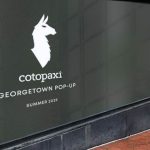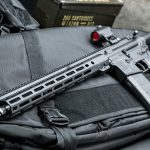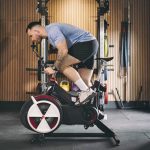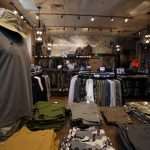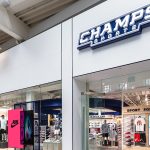The sluggish start to the Holiday shopping season had analysts scrambling last week, as most cut projections for Holiday retail sales gains after November comparable store sales results fell short of expectations. Sports Executive Weekly is also hearing rumbles from sporting goods industry vendors, primarily on the apparel side of the business, that are being asked by some retailers to hold off shipping fresh Holiday goods as inventory backs up a bit in-store.
Retail same-store sales rose just 1.7% for the month of November, according to a survey of over 70 retailers conducted by the International Council of Shopping Centers. But that weak number, which fell far short of the early estimates of a 3% to 4% gain, was actually helped by a strong double-digit gain at Drug Stores. Excluding the Drug Stores sales, total comps rose an anemic 1.1% for the period. The results were seen as the weakest since May, when comps rose just 1.3%.
On the other hand the results were negatively impacted by the weakness at Wal-Mart, which sneezed and gave everyone a cold, posting an anemic 0.7% comp store sales gain for the month. Excluding WMT, total retail comps were seen increasing 2.4% for November, a bit below ICSCs revised projection of a 2.5% to 3% increase for the month.
The issues at Wal-Mart may signal that the issues with fuel prices and other economic issues may have finally come home roost as lower income shoppers appeared to stay away from the reduced level of discount sales on Black Friday Weekend. Consumers held out for bargains, further pressuring sales for the month, as did an increase of mail-order and online purchasing, according to Michael Niemira, ICSCs chief economist.
It was again the so-called Luxury retailers — joined by a rejuvenated JC Penney — that saw most of the noteworthy sales gains for the month of November. The luxury sector rose 5.2%, with Neiman Marcus posting an 8.4% comp store sales gain and Saks Fifth Avenue delivering a 6.8% increase for the month. But Nordstrom took a step back, posting a 3.1% same-store increase for the month versus a 7.4% gain in November last year.
JC Penney joined with the Luxe retailers to help Department Stores outpace the Discount sector for the month as JCP comps jumped 12.0% for the month versus a 0.8% decline in the year-ago period, aided by a shift in their calendar this year. Federated fell short of expectations with a 1.4% comp gain, while May Company same-store sales fell 7.9% for the period. On the Discount side, Target provided the strength with a 3.2% gain.
The ICSC survey does not break out Athletic Specialty retailers, but The Finish Line reported same-store sales results for the third quarter and also broke out monthly performance for the period. The retailer saw its double-digit gains evaporate late in Q3 as the 12% comp increase for September dwindled to just a 3% increase by the time November rolled around.
Apparel was in negative territory for all three months and Footwear comps rose just 5% in November. Still, these numbers easily surpass the numbers at the retailers cross-mall rivals that saw increases in the low to mid-single digit range in their third quarter ended October.
Mens Footwear comped up in mid-singles, driven by Shox and adidas a3 Cushion product. In addition to strength in running and basketball launch product, FINL also pointed to improvement in its team basketball business. Womens and Kids reportedly continued its “success story”, posting double-digit gains for the quarter, driven by Classics and Performance.
The average selling price in Footwear was up 3% versus last years third quarter.
In Apparel, FINL said they were “very encouraged” by the continued increase in the Branded business and also cited “significant gains” in Private Label. The retailer made adjustments in its Licensed business to more of a fan-based model which they feel is working. They said sales of Reebok OnField product was up double-digits in November, despite the current promotional activity in the mall.
Internet sales, which boosted comp sales gains by 2% for the period, were up 80% for the quarter on increased circulation of the Mag-a-Log.
Total net sales increased 16.4% to $235.3 million, compared to $202.0 million in the year-ago period. Gross margin and occupancy showed “slight improvement”, while SG&A was “up slightly” on marketing and fuel-cost freight increases. Inventory level is “on plan” and company saw “improved aged inventory” levels. FINL expects to see inventory up 4% to 6% at end of Q3.
Management confirmed Q3 guidance calling for EPS in the four cents to six cents per share range. For fourth quarter, Finish Line is estimating earnings in the range of 50 cents to 52 cents per diluted share on sales of roughly $351 million. Comps are expected to be up 3% versus a 19% increase in Q4 last year.
In the ICSC survey Footwear stores saw comps decline 1.2% in November, again hurt by unseasonal weather in many key parts of the country.
Shoe Carnival, Inc. reported that sales for the month increased 4.2% to $45.2 million from sales of $43.4 million for November 2003. Comparable store sales decreased 1.7% this year on top of a 7.8% decrease in November last year.
The Womens business was said to be “flat” to last year, while Mens was down in high-single-digits and Kids, which includes Kids Athletics, was off very-low-single-digits. Mens and Womens Athletics were both down in low-singles, netting a total decline of 2.5% in the Footwear category. Accessories were up low-double-digits.
Black Friday and Saturday were “flat” to last year.
Management said inventories are down almost 3% on a per store basis on top of a similar improvement in November last year. Shoe Carnival opened three new stores in November.
Famous Footwear had a better month as new promotions pushed total sales up 6.3% to $79.3 million from $74.6 million in November last year. Same-store sales were up 2.1%, as the chain enjoyed a solid start to the holiday shopping season.
DSW Shoe Warehouse, which is the family footwear division of Retail Ventures, Inc., posted a 20.7% sales increase in November to $76.7 million, compared to $63.5 million in November last year. Comp store sales rose 3.1% on top of a 9.5% increase in the prior year month.
Apparel chain stores saw a decline of 1.1% in comp sales for the period, due in large part to a 4.0% decline at Gap that more than offset a strong double-digit jump at American Eagle Outfitters.
Pacific Sunwear, which is not represented in the ICSC figures, saw its comp store sales gains continue to weaken in November as consolidated same-store sales increased 2.7% for the comparable four-week period ended Nov. 27, 2004. PacSun same-store sales increased 2.3% and d.e.m.o. same-store sales increased 6.3%.
At PacSun, the Guys business was up in mid-single-digits, while Girls saw a low-single-digit decline for the month. Fleece was up mid-singles for Guys and low-singles for Girls.
At d.e.m.o., the Guys business was down in low-single-digits, but the Girls business jumped more than 20% for the month.
Total transactions per comp store were down low-single digits, but the average ticker per comp store was up in mid-singles, due primarily to a mid-single-digit increase in unit sales per transaction.
The Buckle reported that sales for November increased 4.5% to $40.3 million from sales of $38.5 million in the corresponding period last year. Comparable store sales decreased 0.4% versus November last year.
West Marine, Inc. reported that net sales inched up 0.4% to $34.6 million in November, compared to net sales of $34.5 million for November last year. Comparable store net sales for November 2004 decreased 2.9% compared to the same period a year ago.
John Edmondson, CEO of West Marine, said, “November sales came in as expected. Comparable store sales were challenged because last year the Thanksgiving Day closure was in fiscal December, while this year the holiday fell into fiscal November. After adjusting for the calendar shift, comparable store sales would have been relatively flat.”
ICSCs Niemira is estimating that December sales are likely to rise between 3.5% and 4% once Christmas shopping picks up, but hinted that it may not be enough to offset November’s weakness.
ICSC is lowering its overall holiday season sales forecast to between 2.5% and 3%, from the previous 3% to 4% forecast. ICSCs Niemira is estimating that December sales are likely to rise between 3.5% and 4% once Christmas shopping picks up, but hinted that it may not be enough to offset November’s weakness.
ICSC is lowering its overall holiday season sales forecast to between 2.5% and 3%, from the previous 3% to 4% forecast.
The National Retail Federation said it was sticking with its forecast for a 4.5% gain in total retail sales, which excludes restaurant and auto sales, a 600 basis point decline from the 5.1% increased posted in for the Holiday period last year.
“We think it is too soon to define the holiday season as a success or a disappointment,” said Ellen Tolley, a spokeswoman at the NRF. “The holiday season is going to be decided at the last minute, the week before and the week after Christmas” when shoppers do much of their buying.
In recent years retailers have seen a lull in sales after the Thanksgiving weekend until the week or two before Christmas as consumers play chicken with retailers to see who will blink first. Last year, the retailer won the fight, posted better margins and profits on fewer markdowns and last-minute sales.
John Morris, senior retail analysts at Harris Nesbitt, said profits wont be hurt because stores have relatively lean inventories. “It should be a healthy Christmas” in terms of profits, he said.
If this year’s pattern is similar to 1999, the last year when Christmas fell on a Saturday, eight of the top 10 selling days will occur between December 17 and 24.



